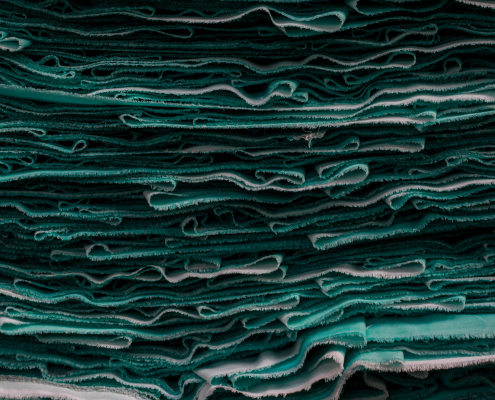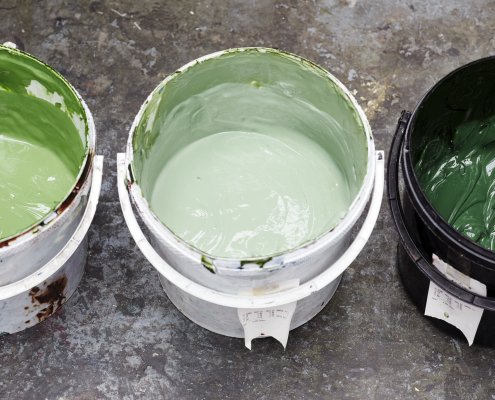Sustainable printing
Continuous improvement
Improving the sustainability of our business and production process is a central and ongoing focus for our company. Recent years have seen major investments to replace and renew core plant infrastructures to ensure lower energy consumption and improve productivity.
What we have done
- A new steam boiler has been fitted to provide a more energy efficient on-demand Steam Generator for preparing fabrics for printing. This is accompanied by a new Jig Preparation Range that has transformed this process by not only using significantly less energy, water and chemicals than before but also significantly less time: what was previously a 3 or 4 day process can now be completed within 24 hours.
- A new Rotary Screen printing machine has been installed that uses less electricity and provides technology for a more efficient set-up to aid the production process.
- A newly installed high-pressure screen washer requires less water and uses cold water, unlike the old screen washer. There is also an integrated tunnel dryer to fix the print that works only when required, whereas the old technology needed it to be on continuously throughout the day.
- Installation of LED lighting throughout the factory has been undertaken to replace older lighting systems.
All of these changes have provided more efficient technology with greater longevity and significant energy saving benefits.
Printing with the environment in mind
We specialise in printing natural fabrics that are sourced from the UK and European mills and stock a variety of fabric qualities that are prepared onsite for customers to use. Our assortment includes 100% Linens and Cottons, Linen Cotton Union and two new qualities of Hemp introduced this year.
The majority of our production output is printed onto 100% Linen made from flax grown in Europe. Flax is a fibre that is grown as an annual plant that takes 100 days to mature from seed to harvest. Traditionally this remarkable and sustainable crop requires little or no irrigation or chemical use during the growing process and generates zero waste while also providing a carbon sink. Every part of the plant is used for a variety of different purposes – even the root that remains in the ground breaks down to nourish and naturally fertilise the soil.
All of our Flatbed Screens are engraved in-house and the metal frames are recycled or repurposed on an ongoing basis.
This is not new
Carbon dating from Egyptian Tombs has proven that flax has been used for textile production for more than 8,000 years. In Ancient Greece it was common place for individual households to have their own flax gardens. Our individual and global challenge is to restore a healthy environment so that Linen, Hemp and other natural textiles can be sustainably created for thousands of years to come.
Pigment colour
Printing with pigment colour is widely accepted to be more environmentally friendly than printing with dyes largely due to significantly fewer chemicals, with less water and power being used during the production process.
Digital printing requires even less energy consumption and water usage than screen printing and also allows us to produce more precise quantities for sampling and production orders in order to reduce waste. We use eco-friendly certified Pigment Colours for Screen and Digital printing. To finish the fabrics, we offer a Sanforising process that uses heated rollers to soften the cloth after printing, for which there are no chemicals involved.
Minimising waste
We take responsibility for our waste management and make every effort to find ways to re-use and recycle cardboard and packaging as well as re-homing fabric waste, redundant machinery and other useful materials. For instance, this month an old printing blanket was skilfully repurposed to create an insulated makeover for what was a tired screen washing bay in the heart of the works.
The future
Sustainability is a multi-dimensional process for us all to navigate with a challenge to balance industry expectations and market pressures with the sustainable needs of our natural environment. As a company it is our aim to provide an environmentally sustainable textile printing service in London and we look forward to sharing new sustainability initiatives with you as they occur.


